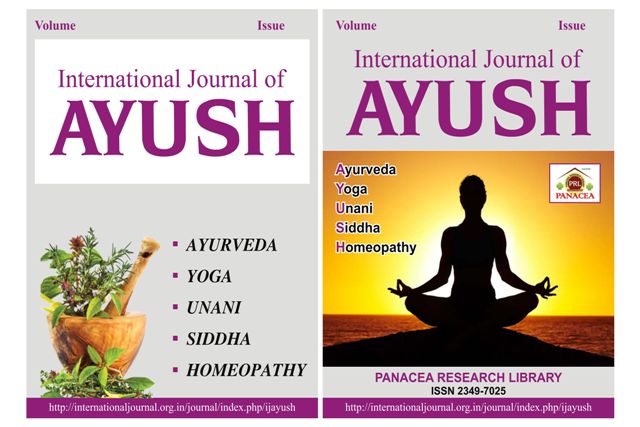SUSTAINABLE USE, CULTIVATION AND CONSERVATION STRATEGIES FOR AYURVEDIC DASHMOOLA MEDICINAL PLANTS: A DRAVYAGUNA PERSPECTIVE
DOI:
https://doi.org/10.22159/prl.ijayush.v14i09.1508Keywords:
Pippali Dwaya, Agni, Ama, Ojas, Autoimmune Disorders, RasayanaAbstract
Background Dashmoola, a classical group of ten medicinal roots, is widely used in Ayurveda for its therapeutic properties, particularly in inflammatory, analgesic, and respiratory disorders. Increasing demand, overharvesting, and habitat degradation have placed several Dashmoola species at ecological risk. Addressing their sustainable use and conservation is vital for ensuring their availability for future generations. Aim To evaluate sustainable use, cultivation, and conservation strategies for Ayurvedic Dashmoola medicinal plants from a Dravyaguna perspective. Objectives To review classical Ayurvedic references of Dashmoola plants and their therapeutic importance. To analyze current challenges in availability and sustainability of Dashmoola species. To explore scientific methods of cultivation and propagation for Dashmoola plants. To identify effective in-situ and ex-situ conservation strategies. To propose integrative approaches combining Ayurvedic wisdom and modern conservation practices.. Materials and Methods This review is based on an extensive literary survey of Brihattrayi, Nighantu Granthas, and contemporary research databases. Information on pharmacognostic features, habitat requirements, and therapeutic uses of Dashmoola drugs was compiled. Conservation frameworks from national and international agencies (AYUSH, IUCN, WHO) and published cultivation protocols were examined to identify feasible strategies. Results The review highlights that species such as Shyonaka (Oroxylum indicum), Patala (Stereospermum suaveolens), Agnimantha (Clerodendrum phlomidis), and face critical challenges due to habitat loss and unsustainable collection. Cultivation protocols including micropropagation, nursery raising, and agro-techniques have been standardized for some species but remain underutilized. In-situ conservation in forest reserves, ex-situ conservation through botanical gardens, and farmer-participatory cultivation models are promising approaches. Integration of classical Ayurvedic knowledge with modern conservation biology ensures both therapeutic authenticity and ecological sustainability. Conclusion Sustainable use and conservation of Dashmoola plants require a multi-pronged strategy that combines traditional Dravyaguna wisdom with scientific cultivation and conservation methods. Encouraging community-based farming, establishing medicinal plant gene banks, and promoting awareness among practitioners and farmers are crucial steps.



